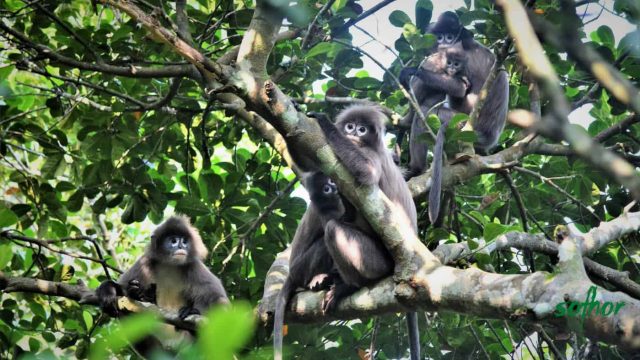From Our Correspondent, Moulvibazar: Lawachara National Park is one of Bangladesh’s most diverse and ecologically rich natural forests. Spanning about 1,250 hectares in Kamalganj upazila, it stands as a shining example of the country’s commitment to biodiversity conservation. Officially declared a national park in 1996, its origins, however, go much further back. Established during the British colonial period as a reserve forest, it has gradually evolved into a remarkable symbol of harmony among nature, wildlife, and human life.
A walk through Lawachara offers an enchanting experience — dense greenery overhead and the symphony of birds all around. The forest is home to around 460 species of plants, 160 species of birds, and more than 50 species of mammals. Among them, the endangered Hoolock gibbon is the park’s most iconic inhabitant. Lawachara is one of the very few forests in Bangladesh where these gibbons still survive. Visitors may also spot monkeys, squirrels, wild cats, bees, snakes, and colorful butterflies.
Several natural walking trails crisscross the park, allowing tourists to explore with the help of local guides. Early mornings and late afternoons are the best times to witness the forest’s vibrant wildlife. Interestingly, the Dhaka–Sylhet railway line passes right through the park, adding a unique charm — many travelers enjoy the breathtaking scenery through the train window as it cuts across the lush forest.
Inside the park live small ethnic communities, particularly the Khasia and Manipuri peoples. For generations, they have lived in close connection with nature, practicing betel-leaf and jhum cultivation while preserving their cultural heritage. Their eco-friendly lifestyle and deep respect for the forest have become part of Lawachara’s identity.
Despite its beauty and tourism potential, Lawachara faces significant conservation challenges. Illegal logging, irresponsible tourist behavior, and the impacts of climate change threaten its fragile ecosystem. Environmentalists emphasize that stricter tourism management and greater involvement of local communities could transform Lawachara into a model eco-tourism zone in South Asia.
In essence, Lawachara National Park is not just the pride of Moulvibazar — it is a living emblem of Bangladesh’s commitment to nature and biodiversity. For nature lovers, researchers, and travelers alike, it remains an unforgettable destination.











